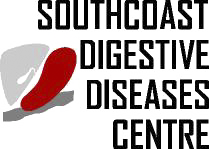Eosinophilic Oesophagitis – Not an Uncommon cause of Dysphagia in Adults
Eosinophilic oesophagitis (EO) has been sporadically reported since the 1970s in the children as a cause of dysphagia. In recent times, more and more cases of EO are being reported as a cause of dysphagia and food bolus obstruction in the adult. EO can cause oesophageal strictures and stiffness and is defined by more than 20 eosinophils per high power field in the proximal oesophageal biopsies.
Incidence in the children has been reported to be in the range of 1.2 to 1.3 per 10,000 children. Incidence has not been worked out in the adults although some 20% cases of dysphagia or food bolus obstruction would be associated with EO. EO mainly affects the male sex in the 3rd to 4th decade in the adults . Some 7% have family history.
Clinical: There is usually history of atopy such as rhinoconjunctivitis , asthma, food allergy , dysphagia and food bolus impaction. There may also be some history suggestive of reflux. Family history of atopy is also noted.
Pathology: Peripheral blood eosinophilia, positive RAST test, raised IgE and positive skin allergy patch tests have been noted although the relevance of the skin allergy tests is uncertain.
Endoscopy: Ringed oesophagus with tiny white papules(Fig1) and furrows(Fig2) with a corrugated ap- pearance is the characteristic appearance. Association with Schatzki’s ring has been noted.
Pathogenesis: Recruitment of eosinophils are said to be triggered by an allergen activating peptide eotaxin and interleukin 5. Endoscopic ultrasound demon- strates thickening of the mucosa and muscular layers.
Diagnosis: is based upon the clinical history of dysphagia , food impaction, nausea or chest pain associat- ed with characteristic endoscopic appearance and histological demonstration of eosinophilia in the prox- imal oesophagus with, sometimes, presence of eosino- philic microabcessess. Raised IgE, peripheral eosino- philia and abnormal oesophageal manometry may be additional findings.
Treatment: Exclusion of milk, wheat, soy, eggs, peanuts and seafood has been found to be beneficial and is favoured more than elemental diet based upon the assumption that one of these allergens is responsible for triggering the immune response which leads to EO. Systemic steroids, in divided doses such as prednisone 1mg/kg reducing over 8 weeks , does improve symptoms but relapse rate is high. Also system side effects occur. I prefer to use inhaled fluticasone 220microgms/puff twice daily delivered without a spacer over 8 weeks. Then a small sip of water to wash down the steroid into the oesophagus. Preferably no food or drink is allowed over the next half an hour.
Response lasts 4 months on an average and fluticasone can be repeated. Failing oesophageal dilatation may be required which should be undertaken with cau- tion and adequate prior discussion with the patient given that there is a certain higher risk of oesophageal mucosal tear and even perforation in EO. Other agents used are antihistamines and Cromolyn Sodium with variable response. Montelukast, a leukotriene inhibitor, has been demonstrated to help in EO. Sev- eral side effects have been observed. Mepolizumab, a humanized monoclonal antibody to interleukin 5, was found to be helpful in a case report of 4 patients. However, larger studies are required. Partial patient response has been seen with acid suppression.
Prognosis: Long term prognosis is not definitely known. Thirty adults have been followed over 7 years . The disease appears to persist confined to the oesoph- agus. Attacks of dysphagia are more common in patients with peripheral eosinophilia.
Bhaskar Chakravarty

